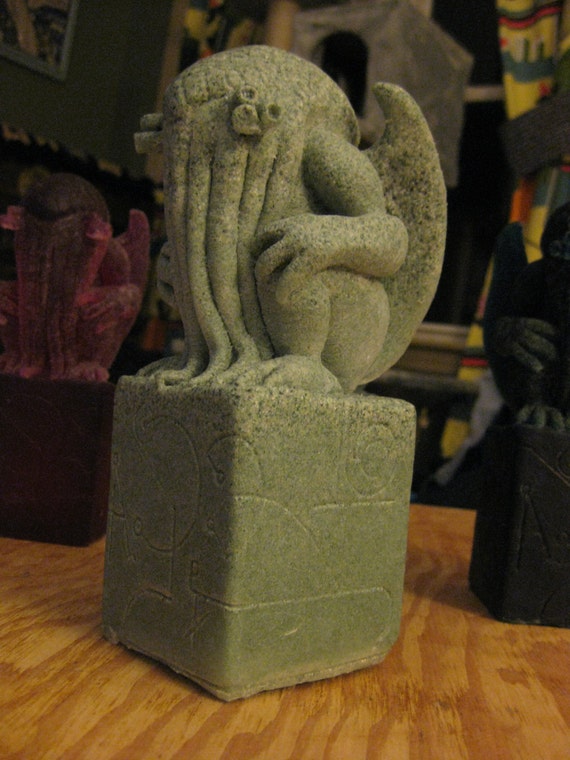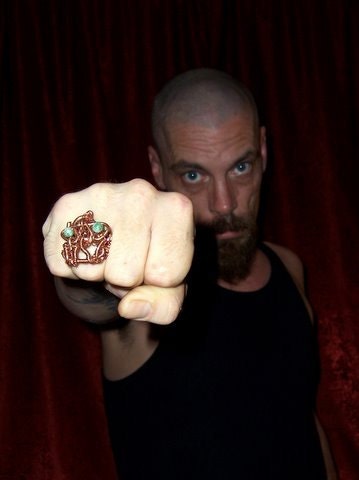A weird disorientation, a juxtaposition, happens when your local news goes national. Most news, alas, is horrific; so when you’re sharing your local horrors with the national audience, the disorientation probably isn’t as noticable. You’re probably just lost in anguish.
It’s about 40 miles as the crow flies from the spot I’m writing this to the front door of the Seymour Avenue house of  horrors in Cleveland, Ohio, that was uncovered just four days ago. What happened there, no surprise, is news. Big news, much more than national. I contacted a friend of mine in England yesterday, asking if this story was in play there. “It’s everywhere,” she said.
horrors in Cleveland, Ohio, that was uncovered just four days ago. What happened there, no surprise, is news. Big news, much more than national. I contacted a friend of mine in England yesterday, asking if this story was in play there. “It’s everywhere,” she said.
And yes, the story is horrific. It features a monster (at least one), as well as innocent victims who suffered unspeakably for far too long.
But I think that one of the reasons this story is resonating and transcending borders, is that it has elements that are the opposite of horror. It includes brilliant flashes of human resilience, and of goodness. It hints at the miraculous.
has elements that are the opposite of horror. It includes brilliant flashes of human resilience, and of goodness. It hints at the miraculous.
I’ve heard the phrase “happy ending” appended to this story, countless times over the last several days. And of course that’s understandable—it goes to the entire reason this story is resonating. It nourishes a neighborhood, a city, an entire world that is desperate for happy endings.
But it’s inaccurate, because this story is in no way at an end. At best, it’s at a sort of intermission. And happiness? There’s that, to be sure, but it’s tempered. Not just by the decade-long nightmare that only just ended, but also by the sleepless nights and readjustments, and trials and testimony to come.
The celebrations in Cleveland, the balloons tethered to doors and the cheering crowds in the streets of the Tremont neighborhood, show that most of us don’t want this intermission to end. We want to capture this frozen moment in time,  when captives were freed and monsters handcuffed and heroes rose to the occassion. Right now the happiness far outweighs the horror, at least for we observers. Tremont and Cleveland, and Ohio and the world sees so little such happiness, it’s hard to let it go.
when captives were freed and monsters handcuffed and heroes rose to the occassion. Right now the happiness far outweighs the horror, at least for we observers. Tremont and Cleveland, and Ohio and the world sees so little such happiness, it’s hard to let it go.
What comes next? Nothing ruinous, I hope, but this is reality after all. Intermissions notwithstanding, happy endings are in short supply. Too often our real-life hero stories devolve in the aftermath, with squabbles over money or movie deals. Beyond the limelight, the personalities involved have to find a way to separate the surrealistic interlude that just defined them, and continue, somehow, with a life that must go on. We must let go and let them do that.
We don’t own Michelle Knight, Amanda Berry, Gina DeJesus, Charles Ramsey, or anyone else wrapped up in this ‘happy ending’ with which we’re trying to edify ourselves. They’re not our contract performers, and we should be ashamed if we expect anything more from them than they’ve already given.
Still more, we have to ask ourselves what do we owe them? What responsibility do we collectively share? Monsters are rare, thankfully, but there must be something about this world, this culture, that we’ve collectively created, which allows monsters to flourish invisibly in places like Tremont.
And why must heroism be so rare that the simple act of helping a stranger is held up as transcendent and remarkable?
This case is extreme but the violence and misognyny at its core aren’t. A society that produces a single Ariel Castro is demonstrably sick; that we have uncounted subhumans like that should make us reevaluate everything.
Enjoy the good feelings and revel in the truth that the horror in Tremont has ended with three young women alive and back with their families. But know this: If we can’t harness what we’ve learned here to start somehow fixing the evil rot deep inside our culture, then horrors will continue and miracles will become vanishingly rare.

 the way, a wee Belgian boy who defended his country with wee—competing legends has him either peeing out a burning fuse, or just peeing on some enemy soldiers’ heads.)
the way, a wee Belgian boy who defended his country with wee—competing legends has him either peeing out a burning fuse, or just peeing on some enemy soldiers’ heads.)
 has elements that are the opposite of horror. It includes brilliant flashes of human resilience, and of goodness. It hints at the miraculous.
has elements that are the opposite of horror. It includes brilliant flashes of human resilience, and of goodness. It hints at the miraculous. when captives were freed and monsters handcuffed and heroes rose to the occassion. Right now the happiness far outweighs the horror, at least for we observers. Tremont and Cleveland, and Ohio and the world sees so little such happiness, it’s hard to let it go.
when captives were freed and monsters handcuffed and heroes rose to the occassion. Right now the happiness far outweighs the horror, at least for we observers. Tremont and Cleveland, and Ohio and the world sees so little such happiness, it’s hard to let it go.



 Somehow they’ve missed this simple fact: We are
Somehow they’ve missed this simple fact: We are 

 Pablo Neruda died nearly forty years ago. His death — mysterious, suspicious — has ever since been a metaphor for the wider and more heinous atrocities of the
Pablo Neruda died nearly forty years ago. His death — mysterious, suspicious — has ever since been a metaphor for the wider and more heinous atrocities of the  He was the first critic to win a Pulitzer Prize, He was the first to be honored with a star on Hollywood’s Walk of Fame. He was a prolific writer, was uncompromising in his social consciousness, and was commonly acknowledged as a loving husband, a great friend, and a remarkable human being.
He was the first critic to win a Pulitzer Prize, He was the first to be honored with a star on Hollywood’s Walk of Fame. He was a prolific writer, was uncompromising in his social consciousness, and was commonly acknowledged as a loving husband, a great friend, and a remarkable human being.







